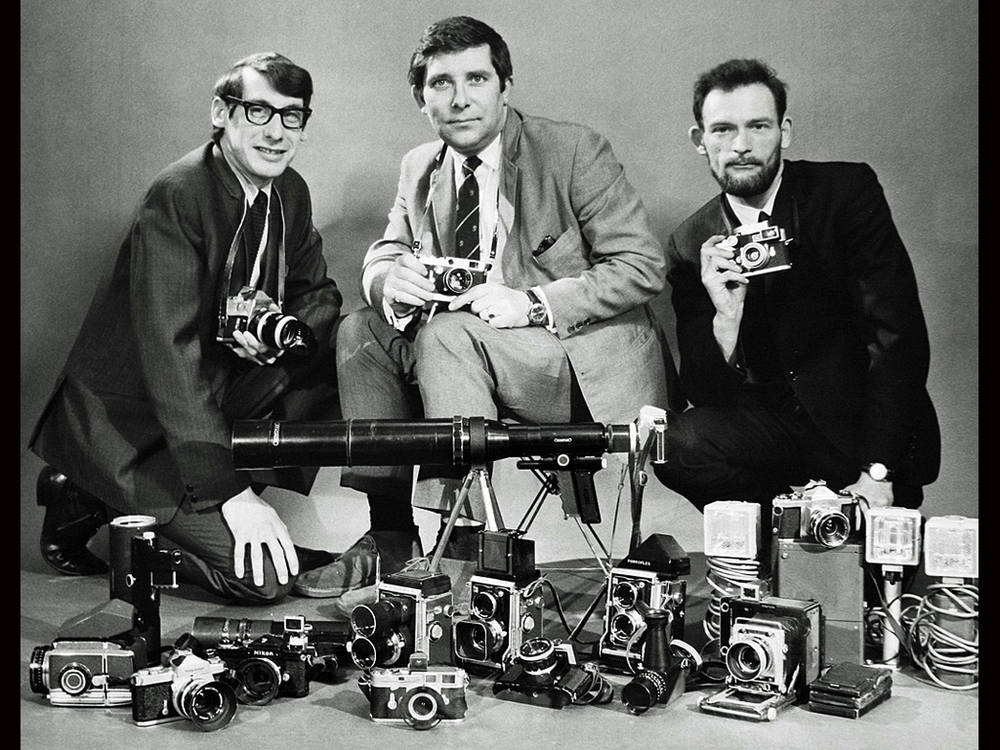
Fifty years ago I worked with Don Morley, a life-long Leica enthusiast, a professional photo journalist of repute and an outstanding photographer. In those days he was was one of the staffers at Dorset House, home of a multitude of technical magazines including Amateur Photographer, Flight, Autocar and The Motor Cycle where I was a young journalist. I was the bane of his life, constantly asking for ever more impressive riding shots of the latest Triumph or Honda as I circled the roundabout at the foot of Waterloo Bridge. Recently I asked Don to give us an insight into his Leica life as well as a brief overview of his glittering career in photo journalism.

Don takes up the story:
My passion for Leica started in 1954 when I frittered my savings on a magnificent IIIf. Then, in 1957, I ordered another one but got an IIIg because the f had been discontinued. Yet much as the collectors prefer the IIIg nowadays, with its bigger viewfinder, I never liked it as much as its predecessor.
Until 1961 I was employed in the photographic department at Rolls Royce but decided to make the move into the press world by joining the staff at Associated Iliffe Press in London. It was a culture shock after all my experience with using Leicas over eight years. I was astounded to be handed a more or less pre-war 9x12cm VN Press plate camera. My fellow photographers were begging to be allowed to get something more modern, but the management line was: “We love your pictures―so why spend money needlessly on new cameras?”
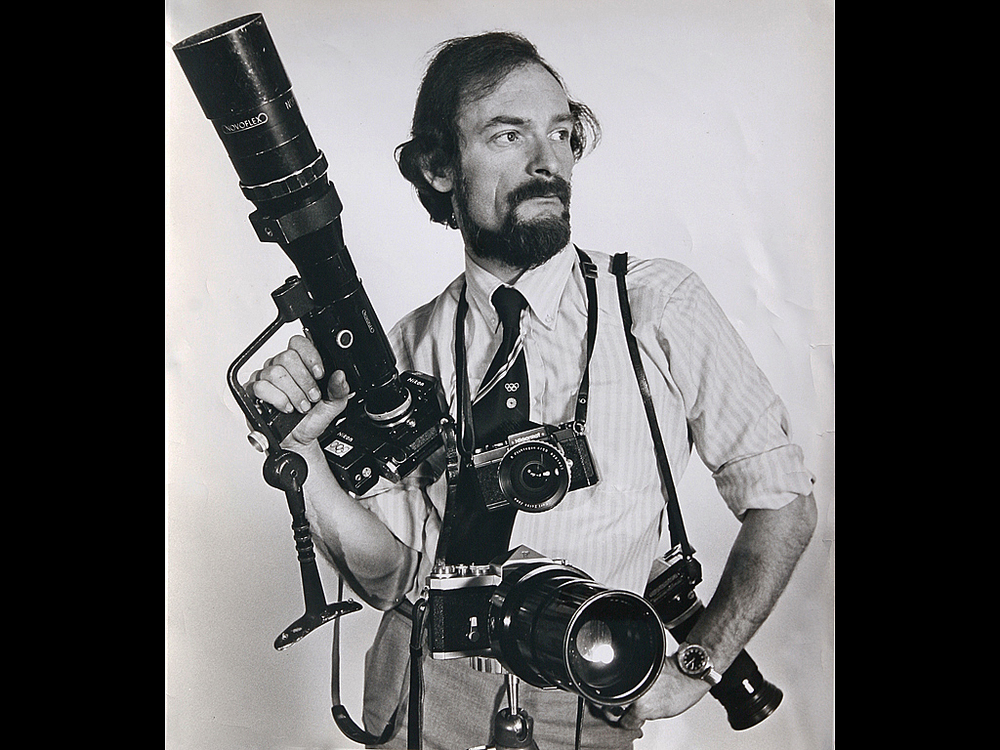
That said, I often still used my own Leica M2s and M3s despite the ban, especially in conjunction with the Visoflex 2 and 200mm Telyt when working for The Motor Cycle or Autocar at race meetings. But in doing so I made myself very unpopular with my colleagues who resented what could be so achieved, but were not prepared to spend any of their own money to follow suit.
Ron Eastham was the only colleague who, as it were, saw the light. He did eventually persuade Iliffe to foot the bill for a similar outfit to my own. Then department head Bill Banks, who had been violently against any change from plate cameras and big format, gave in by buying a TLR Mamiya.
Somewhere about 1963 I then went back to Motor Cycle News and EMAP for a couple of years (I had freelanced for them from when MCN started in 1957 through to joining Iliffe) and added a couple of Pentax S1s to my stable. Soon, though, I moved back down to London as assistant chief photographer at United Newspapers.
By 1963 most of Fleet Street was using Pentaxes and Rollieflexes, but Pentax was soon pushed aside in favour of Nikon Fs, mostly because the bayonet lenses could be changed quicker than the Pentax screw-mount optics. From then until the 1980s nothing much changed on Fleet Street in terms of equipment.
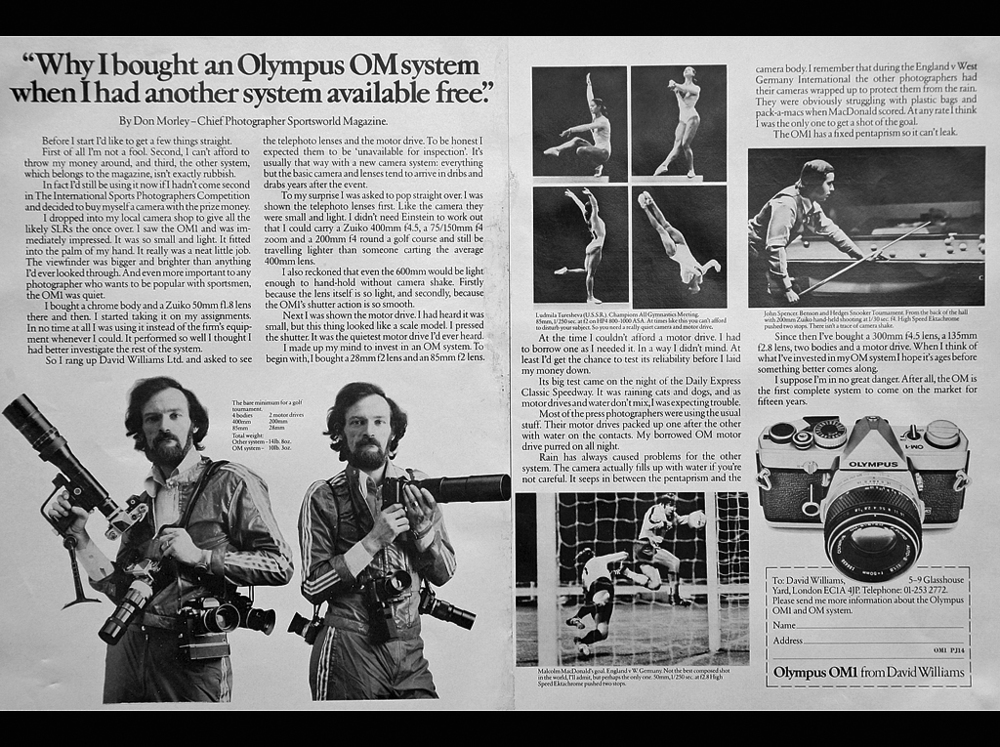
Most newspapers still had a 5x4cm Speed Graphic Press Camera or two right through this period because they were great for getting the one quick shot, for instance outside of the Old Bailey at such as the Oz trial, nipping back 100 yards to the office, processing for 30 seconds (in print rather than film developer) sticking the wet 5×4 in the enlarger and knocking a wet print straight off to put on the wire.
The negative was then scrap, but the point is that 5×4 quality was normally so good you could abuse it and lose it. And, incidentally, this is also why most of us also used a Rollei, especially at major sporting events. At an England international at Wembley we would process the bigger format film on the pitch, while continuing shooting on 35mm, then rush the wet film back to Fleet Street by motorcycle messenger so as to catch the earliest editions.
The lead photo shows our United Newspapers photographic team for the 1966 World Cup Final. I have my Leicas still on the right, but note also the Speed Graphic and such as Bronica and Mamiya six-by-sixes. You will be impressed by the fact that we photographers owned all of the equipment ourselves. We were paid a weekly camera allowance.
Some years later I moved over to the Guardian as photographer/picture editor. Believe it or not, even in the 1970s, Guardian staff photographers all had to use screw-thread Pentax Spotmatics with just a 50mm lens, nothing else, and flash was totally banned. Again I often used my own Leicas, but very much in secret.
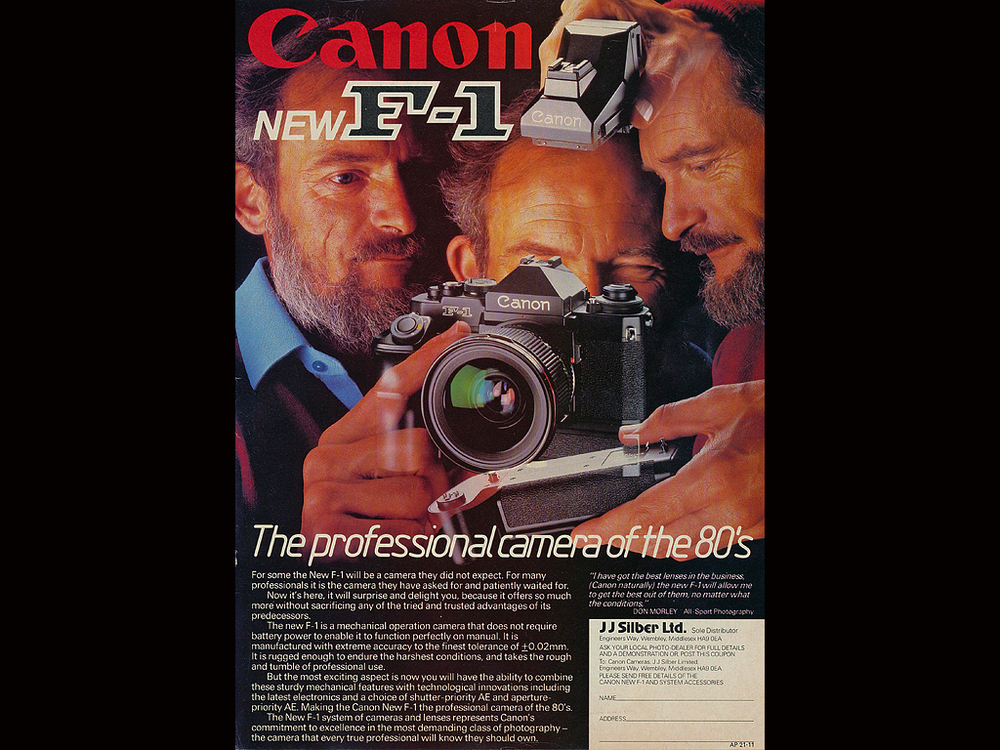
Some of us stuck with Leica for two very good reasons. First was the much quieter shutter noise, important, for instance, at such as royal occasions and funerals: I covered many, including the funerals of John F. Kennedy and Winston Churchill. Second benefit was the instant picture. It is the only way to capture the precise moment―such as the punch landing on the chin at a boxing bout. With an SLR you lose that fleeting but vital fraction of a second when the mirror flips up to allow the shutter to fire. This also was another reason why twin-lens reflexes such as the Rolleiflex continued in use .
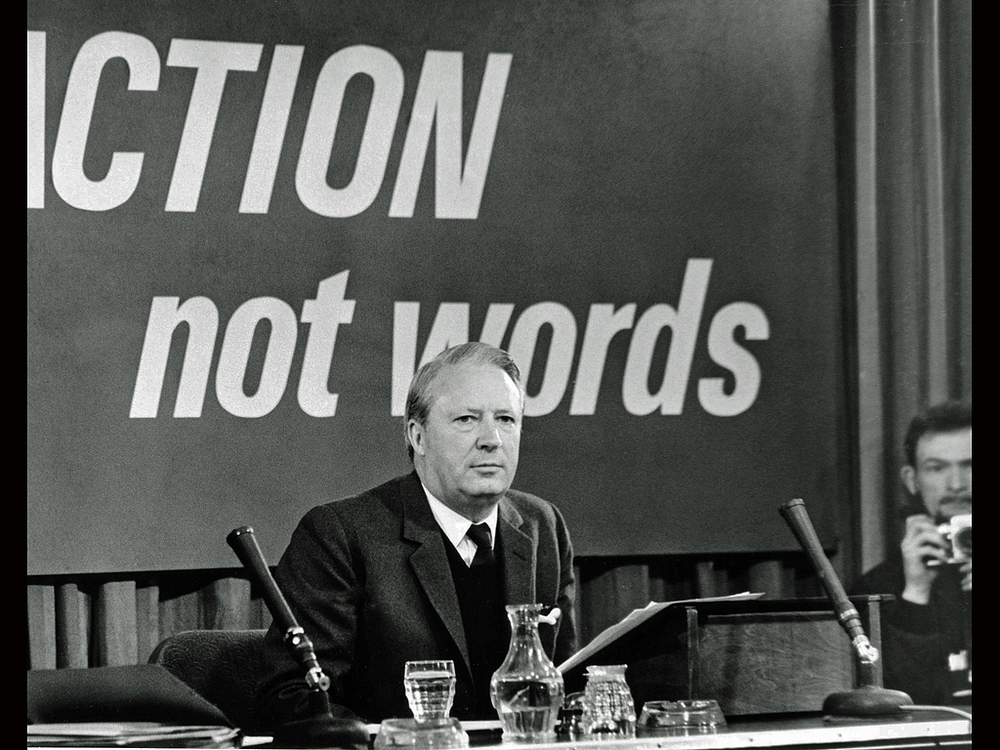
I rejoined United as Chief Photographer later, went back to Nikons, and then Olympus before going off and founding the All-Sports Agency. At the 1976 Olympics I had all my Olympus gear stolen and had to go cap in hand to Canon (who were the official camera sponsors of the games) to borrow a replacement. I have used Canon ever since.
Despite this I still love my Leicas and take a keen interest in the happenings in the Leica world. It says something that my original IIIf is probably still in pristine condition and being used to this day by an enthusiast somewhere (could it be the very one that Mike Evans just bought from Red Dot Cameras?). Few other manufactures can command this level of dedication and longevity. I still own an M2, M3, two M5s, a CL outfit, two M9s, many lenses (including those big long Novoflexes in the picture, Viso 3, 200 & 400 Telyts. I am currently fancying an X Vario but suspect I will finish up with a Fuji XE-2 instead (I have a Fuji X20 which is just brilliant).
Don Morley
A man who knows a thing or two about photography
- Former chief photographer, The British Olympics Association
- Winner of Time Life Man in Sport award (USA)
- Assistant chief photographer, United Newspapers (10 years)
- Staff photographer/picture editor, The Guardian
- Chief photographer, Sports World and Worldsports magazines
- Chief photographer, The Football League Review
- Three times Motoring Photographer of the Year
- Winner, AIPS International Sports Photography award
- Winner, Royal Photographic Society/Sports Council Sport for All photography award
- Winner Sports Picture of the Year award
- Chief photographer and photographic manager, World Student Games
- Chief Photographic Liaison Officer IRPA (all Grand Prix circuits worldwide)
- Founder, past chairman and honorary member of the Professional Sports Photographers’ Association
- Co-founder, director, All-Sports Photographic Agency (now Getty Images)
- Author of 24 books, including six on photography

Fascinating – I thought I knew a lot about him already
That’s a surprise. I did not realise you had followed Don’s career and photography.